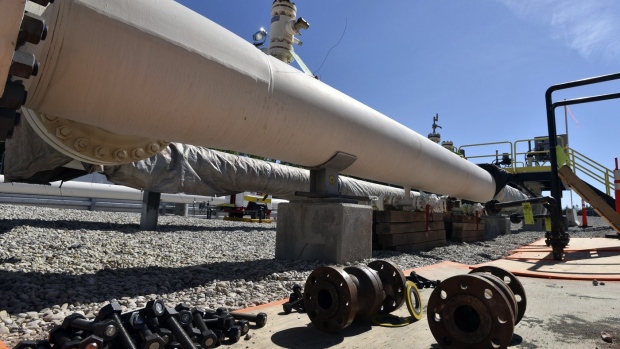SNC-Lavalin's services in high demand amid clean energy transition: CEO
, The Canadian Press
SNC-LAVALIN GROUP INC (SNC:CT)
REAL-TIME QUOTE. Prices update every five seconds for TSX-listed stocks
Speaking with BNN Bloomberg’s Amber Kanwar on Tuesday, Ian Edwards, president and chief executive officer of SNC-Lavalin, said the resurgence in nuclear power and need for clean energy infrastructure gas brought government contracts back to the company.
“Where we’ve positioned this company, in the U.S., the U.K. and Canada — these country’s are heavily investing in the renewal of aging infrastructure, investing into infrastructure that commits to a clean energy future and also a clean energy transformation,” he said.
He added that SNC-Lavalin has divested out of oil and gas, and has also put most of the lump sum construction it was used to servicing behind it — making room for its new business model to focus on projects that will aid the world in the production of clean energy.
As a result of the new strategy, the company posted $2.02 billion in revenue for the quarter, up from the $1.89 billion from the same time last year.
Edwards noted because it is government contracts fuelling SNC’s business, he remains optimistic about future growth despite an uncertain economic landscape.
“We are in nuclear, we are in the renewable space, we provide services to all of our customers and governments in all of those core geographies and we see very, very, strong demand for the services that we sell,” he added.
As the business expands, he anticipates it will generate free cash flow by next year, at which point conversations about mergers and acquisitions are likely to begin. This will result in the company generating both organic and inorganic growth, he added.
“We see a predictable future ahead from our engineering services business,” Edwards stated.
, The Canadian Press
WSP Global continued its years-long expansion this year, acquiring companies and securing contracts with an eye to the growing market for green projects.
Since late January, the engineering firm has completed three more acquisitions in Australia, Switzerland and Quebec, adding 900-plus employees to the payroll.
A fourth pending purchase of Australian engineering outfit Calibre will boost its headcount by another 800 and entrench WSP's prospects as a player in mine rehabilitation, said CEO Alexandre L'Heureux.
"It's built on the 2021 acquisition of Golder" — a 7,000-employee environmental consulting firm based in Toronto — "and aims to further position WSP as a leader in the mining industry's green transition in Australia and across the globe," L'Heureux told analysts on a conference call Thursday.
A global shift toward renewable energy over the next two decades will foster growing reliance on critical minerals as well as a push toward decarbonization in mining, boosting that sector's potential for WSP, he added.
The Montreal-based company is also part of a consortium selected last month to build the $4.9-billion first phase of Calgary's Green Line, a light-rail transit system comprising the largest infrastructure project in the city's history.
WSP has closed at least seven acquisition deals in the past 12 months — including the 35,000-strong British environment and infrastructure business of John Wood Group — and more than 120 since 2006.
Once a boutique firm called Genivar, the 64-year-old company has more than doubled its head count over the past decade, swelling to about 67,100 employees, including an additional 10,900 in 2022.
In its latest quarter, WSP boosted net earnings 18.4 per cent to $112.5 million from $95 million a year earlier. Revenues for the quarter ended April 1 rose nearly 29 per cent to $3.5 billion from $2.7 billion.
However, WSP's rosy financial outlook includes a couple clouds, according to one analyst.
"The quarter was definitely stronger than expected. But organic growth in the backlog was quite low. And you did maintain guidance, which does imply a slowdown in organic growth for the remainder of the year," Yuri Lynk of Canaccord Genuity told the chief executive.
L'Heureux replied that if two recent contracts, including the Green Line LRT, had been included in the quarterly results, the backlog within Canada would have reached double-digit growth rather than falling three per cent.
"So actually I'm not worried at this point at all ... It's more timing than anything," he said.
“We have 2,000 live projects at the moment, so you’ve got to look at the margin evolution over a longer period than 90 days," he added, referring to the adjusted earnings margin of 15.5 per cent, which remained flat year over year.
The engineering outfit has projected revenue growth of 19 per cent this year to between $10 billion and $10.6 billion. It has also forecasted an 18 per cent jump in adjusted earnings.
This report by The Canadian Press was first published May 11, 2023.
.jpg)

